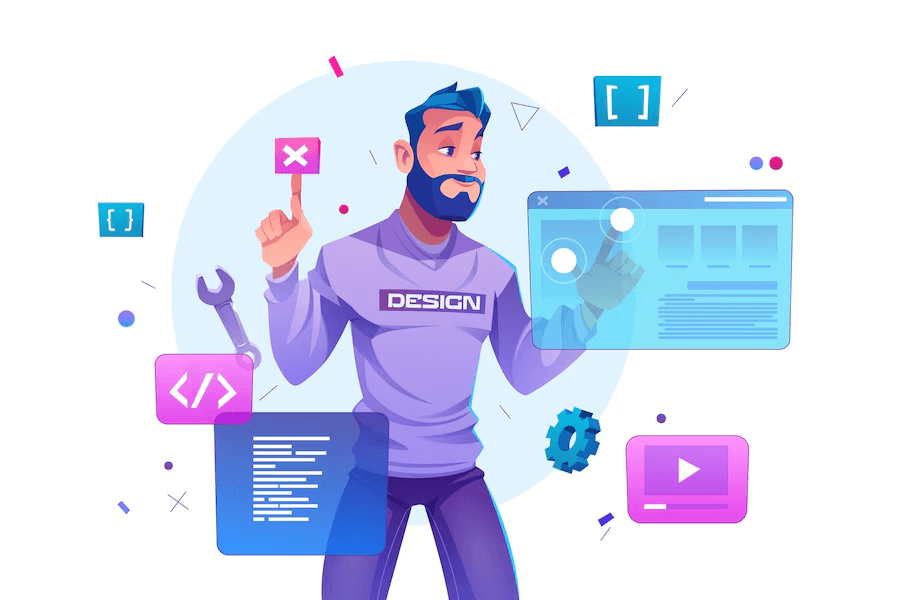The web development landscape is constantly evolving, shaped by new technologies, user expectations, and digital innovation. As we step further into 2025, the demands on websites have never been higher, they must be fast, secure, engaging, and smart. Whether you’re a developer, business owner, or digital strategist, staying ahead of the curve is essential.
In this blog, we explore 10 key web development trends shaping the future of websites in 2025 and why you should care.
1. AI-Powered Web Experiences
Artificial Intelligence (AI) is not just powering chatbots anymore. In 2025, AI is driving personalized user experiences across websites. From intelligent content recommendations to dynamic UI adaptation, websites can now learn from user behavior and tailor interactions in real-time.
Example: E-commerce platforms use AI to suggest products based on browsing habits and previous purchases, increasing conversions and customer satisfaction.
Why it matters: Personalization boosts engagement and keeps users coming back.
2. Headless CMS Architecture
Headless CMS (Content Management System) separates the backend content repository from the frontend display. This architecture gives developers the freedom to deliver content across multiple channels websites, apps, voice assistants, or smart devices using APIs.
Popular headless CMS platforms: Strapi, Contentful, Sanity, Ghost
Why it matters: Flexibility, speed, and scalability are crucial for growing digital businesses.
3. Serverless Architecture
Serverless computing allows developers to build and run applications without managing servers. Services like AWS Lambda, Azure Functions, and Google Cloud Functions take care of the backend infrastructure, letting developers focus solely on code.
Key Benefits:
- Reduced operational costs
- Easier scaling
- Faster development
Why it matters: Serverless architecture simplifies deployment and improves performance, especially for microservices-based websites and applications.
4. Progressive Web Apps (PWAs)
Progressive Web Apps combine the best of web and mobile apps. They work offline, load quickly, and provide app-like interactions all from a browser.
Features of PWAs:
- Offline access
- Push notifications
- Home screen installation
Why it matters: PWAs enhance user engagement and performance without the cost of building native apps.
5. Motion UI and Micro-interactions
Websites in 2025 are more dynamic than ever. Motion UI (animations and transitions) and micro-interactions (subtle visual feedback like button hovers or loading indicators) are no longer just aesthetics, they serve functional purposes.
Benefits:
- Improved user guidance
- More intuitive navigation
- Better storytelling
Why it matters: Motion enhances user experience and makes websites feel more modern and interactive.

6. Accessibility-First Design
Accessibility is no longer a nice-to-have, it’s a must. With stricter regulations and a growing emphasis on inclusivity, developers are prioritizing accessibility in every aspect of web design.
Key practices:
- Semantic HTML
- ARIA labels
- Color contrast and keyboard navigation
Why it matters: An accessible website reaches a wider audience and avoids legal risks.
7. WebAssembly (Wasm)
WebAssembly allows developers to run code written in languages like C, C++, or Rust directly in the browser at near-native speed. It’s ideal for computational-heavy tasks such as video editing, 3D rendering, and game engines.
Use cases:
- Online gaming
- Scientific simulations
- High-performance web apps
Why it matters: Wasm brings unprecedented speed and power to web applications, expanding what’s possible in the browser.
8. Voice Search Optimization
Voice search continues to rise, with smart assistants like Alexa, Siri, and Google Assistant becoming everyday tools. Websites need to be optimized for voice queries, which differ from typed searches.
How to adapt:
- Use natural language in content
- Optimize for featured snippets
- Focus on local SEO
Why it matters: Being voice-ready improves visibility and aligns with modern user habits.
9. No-Code and Low-Code Development
No-code and low-code platforms like WordPress, Webflow, Bubble, and Wix are empowering non-developers to build websites and apps. In 2025, these tools are more powerful than ever, supporting complex logic and integrations.
Who benefits:
- Entrepreneurs and small businesses
- Marketing teams
- Agencies building MVPs quickly
Why it matters: Faster time-to-market and lower development barriers fuel innovation.
10. Enhanced Cybersecurity Measures
With cyber threats evolving rapidly, security is a top priority. Web developers are now integrating security at every level, from HTTPS and encryption to advanced firewalls and real-time threat detection.
Common practices:
- Implementing SSL/TLS
- Using secure authentication (OAuth2, MFA)
- Regularly updating dependencies
Why it matters: Trust and safety are essential for any online presence, especially for e-commerce and data-driven platforms.
Conclusion: Adapting to the Future of the Web
The web development trends of 2025 reflect a broader shift toward smarter, faster, and more inclusive digital experiences. From AI-driven interfaces to voice search and serverless infrastructure, the web is becoming more dynamic and personalized than ever before.
Whether you’re a developer building cutting-edge applications or a business owner planning your next website, these trends offer a roadmap for staying competitive and relevant in the digital age.
Stay curious. Stay adaptable. The web never stands still and neither should you.
Reach to us today for website services.





